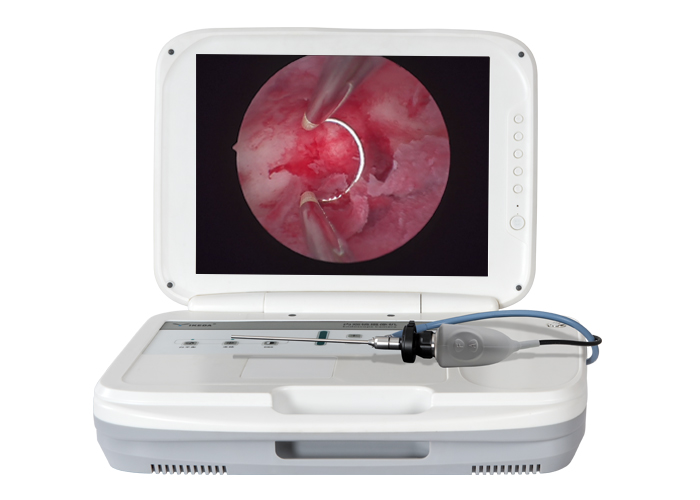Hysteroscope is an advanced device for diagnosis and treatment of diseases in the uterine cavity. It can clearly observe various changes in the uterine cavity and make a clear diagnosis.
Clinical application of hysteroscope:
1. Application in infertility
Hysteroscopic treatment of infertility includes treatment of blocked fallopian tubes, uterine adhesions, endometrial polyps, mucosal fibroids, loose cervical mouth, neglected IUD (intrauterine device) and uterine malformations (mediastinum, double uterus). Horny uterus) and so on. In the past, small endometrial polyps and submucosal fibroids were easily missed by the past diagnostic techniques. The diagnosis should be made only after the polyps or fibroids protrude outside the cervix. Under the direct vision of the hysteroscope, the diagnostic accuracy rate is greatly improved. The most outstanding achievement of hysteroscopy in the treatment of infertility is the treatment of blocked fallopian tubes and intrauterine adhesions.
2. Application in abnormal bleeding
Abnormal bleeding is the preferred indication for hysteroscopy. The blind area of the uterine cavity is used to directly observe the condition of the uterine cavity by expanding the uterus to determine the location, nature and scope of the lesion, so that the positive rate of finding the lesion is increased from 43%. Rose to 85%. If the lesion is determined to be benign under the microscope, the lesion can be resected under direct vision.
The most common causes of abnormal bleeding with hysteroscopy are endometrial polyps and submucosal fibroids. Others have functional lesions, endometrial adenocarcinoma and comorbidities. Although diagnostic curettage is practical, it is not rigorous enough.Hysteroscope can directly inspect the physiological and pathological changes in the uterine cavity, and distinguish the cause of bleeding from functional or organic disease.At the same time, corresponding hysteroscopy and treatment can be performed. Hysteroscopic resection. Hysteroscopic removal of endometrial, submucosal fibroids and other benign intrauterine lesions can replace hysterectomy to cure functional uterine bleeding, uterine fibroids and other diseases, eliminating many of the disadvantages of open surgery.
3. Application in family planning
IUD (Intrauterine Device) is the most widely used contraceptive tool for women of childbearing age in my country, but it is reported that about 7% to 15% of women have abnormal menstruation, abnormal bleeding and low back pain. Observe the position, shape and endometrial condition of the IUD through hysteroscopy and take a biopsy to find the cause and solution of the bleeding. For IUD position abnormalities (downward movement, deflection, partial incarceration, etc.), ring abnormalities (deformation, fracture, residual), and difficulty or failure of conventional methods to remove, use hysteroscope to locate under direct vision, use micro claws, The foreign body forceps can generally be taken out accurately and smoothly. Hysteroscopy can be used to make a clear diagnosis and provide corresponding treatments for cases such as missed aspiration or incomplete uterine aspiration residual fetal bone and perforation of the uterus.
